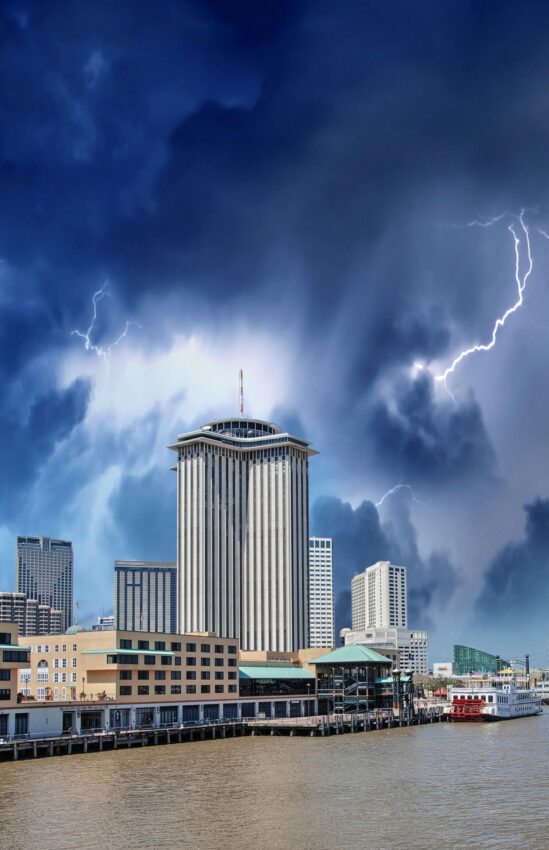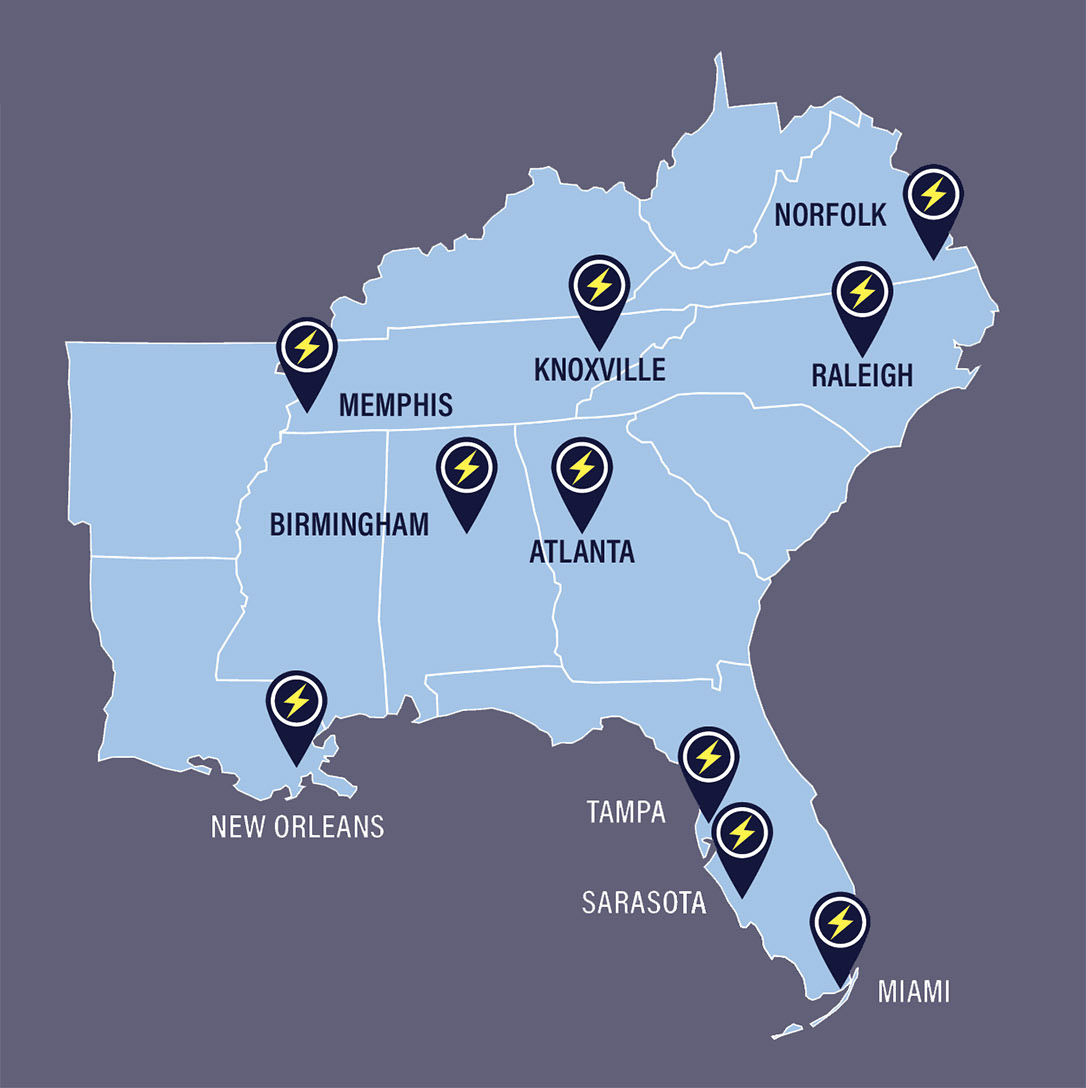Take a walk down a sunny city street and you’ll notice how much hotter it feels than strolling along a country road or even a suburban cul-de-sac. But that downtown heat doesn’t just bring moisture in the form of sweat. It’s also setting the stage for more frequent rainfall and thunderstorms.
Throughout American history, urban cores have been constructed with heat-absorbing materials like concrete, steel and asphalt. Cities also generally have higher concentrations of machines that pump heat into the atmosphere and lower concentrations of cooling vegetation. This increased temperature in city cores provides a source of unstable air that produces rain clouds. This is commonly known as the urban rainfall effect.

Neil Debbage, an assistant professor of geography and environmental sustainability in the UTSA College of Liberal and Fine Arts, has studied the effects of large cities on climatology for years. Recently, he and UTSA graduate geography student Jewel Uzquiano teamed up with graduate meteorology student Robert Forney and geography professor Paul Miller of Louisiana State University (LSU) to observe how metro areas throughout the Southeastern United States enhance thunderstorm frequency. The collaboration resulted in a NASA-supported research paper that was published in Urban Climate in 2022.
One of the driving forces behind his research is urban flood resiliency. A better understanding of the urban rainfall effect will inform city leaders and first responders on how to prepare for potentially hazardous weather events.
“To fully prepare for flooding, urban planners and emergency managers likely need to account for urban amplification of precipitation,” Debbage explains. “It is, in many respects, a double whammy, where urban environments can increase the initial rainfall and then also increase runoff once the precipitation reaches the ground.”
Debbage and his team developed a methodology to create an urban convection ratio (UCR) for each city. The UCR compared the frequency of “weakly forced” thunderstorms — which are storms driven largely by atmospheric instability and moisture — to the frequency of storms anticipated as a result of geophysical factors alone. Finding these UCRs allowed the researchers to specifically isolate urban influences on thunderstorm activity.

STORM-STIRRING CITIES
Of the 32 Southeastern cities included in the study by UTSA and LSU, these 10 had the highest urban convection ratios:
- 1. New Orleans, Louisiana
- 2. Memphis, Tennessee
- 3. Tampa, Florida
- 4. Raleigh, North Carolina
- 5. Knoxville, Tennessee
- 6. Atlanta, Georgia
- 7. Sarasota, Florida
- 8. Miami, Florida
- 9. Norfolk, Virginia
- 10 Birmingham, Alabama
Previous studies have mostly focused on a limited number of large cities, so the UTSA-LSU collaborative examined weakly forced thunderstorms over a 14-year period in 32 urban environments across the Southeastern U.S. The study included large metro areas such as Atlanta, Miami and New Orleans in addition to smaller ones such as Hickory, N.C., Jackson, Miss., and Huntsville, Ala.
New Orleans, Memphis and Tampa emerged as the cities with the largest urban convection ratios in the Southeast, suggesting that these three urban environments dramatically enhance thunderstorm activity.
“I think this study sets the stage for future modeling work to more fully understand the specific physical mechanisms that explain the large UCRs in New Orleans, Memphis and Tampa,” he explains.
While those large cities could prove to be informative study sites for the urban rainfall effect, so too could Knoxville (No. 5) and Norfolk (No. 9) — two relatively smaller cities that exhibited significant thunderstorm enhancements. Their inclusion in the top 10 suggests that the urban rainfall effect is widespread throughout the Southeast.
Debbage recently started preliminary work on a follow-up study examining how the shapes, durations and intensity of thunderstorms in urban environments differ from their rural counterparts. Moving forward, he hopes to apply the UCR approach to cities beyond the Southeast.


